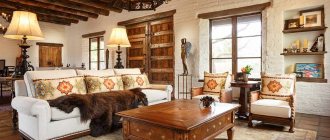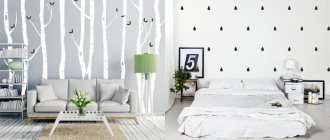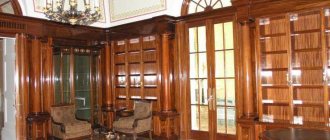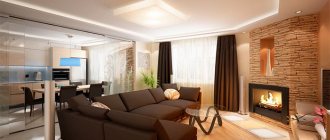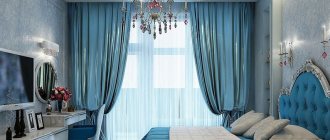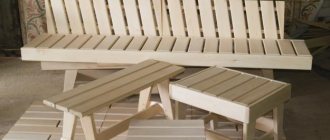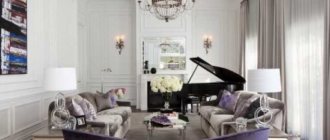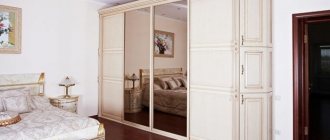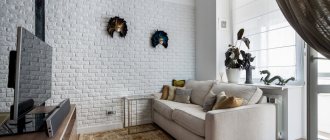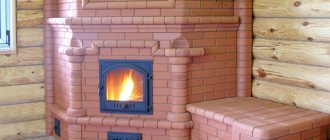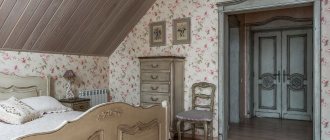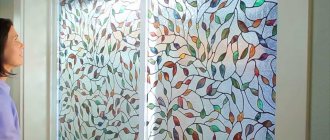Text
Artyom Dezhurko
We call “Soviet furniture” the furnishings of grandmothers’ apartments: cabinets with legs, armchairs with wooden armrests, sideboards, trellises, floor lamps, three-arm chandeliers. The name is inaccurate: most of this furniture is not Soviet in origin. It was made in the Eastern Bloc countries: East Germany, Czechoslovakia, Poland, Yugoslavia, Romania. There was little domestic furniture in Soviet stores.
Spread cabinet legs, wooden armrests, long cabinets, three-legged coffee tables - this is the style of the 60s. In the 70s and 80s they made different furniture: bulky, legless, flimsy, and smelling disgusting. Soviet furniture from the 60s is worth loving. Furniture from the 70s and 80s, in my opinion, is nothing to love.
The style of the Soviet 60s is the same style that in English is called mid-century modern, mid-century modernism. The same chairs, floor lamps, the same walnut veneer can be seen in the first seasons of the Mad Men series, where American interiors of the second half of the 50s were reproduced with great accuracy. In the West, this style flourished in the 50s, and in the USSR it spread later, during the Khrushchev Thaw.
50s style has been all the rage for the past few years. Now this fashion is passing, and I can no longer say: “buy Soviet furniture and you will be in trend.” You won't. But there are other reasons to pay attention to it.
This is not Ikea
The Russian furniture market is structured in such a way that the buyer has few choices. If he is rich, he buys furniture from premium Italian brands. If he is poor, he buys trash at a furniture center on the outskirts. If he is neither rich nor poor, there is only one way - to Ikea. I get angry when I remember how much good and inexpensive furniture there is abroad. They don't take her here. Or they carry it, but sell it at the price of Italian premium brands.
So it turns out that no matter what apartment you go into, there is Ikea everywhere. I would like to add variety to the landscape. Grandma's sideboard is one of the few available methods.
All about furniture of that time
A characteristic feature used in the furniture style under consideration is its brevity. Large headsets will be inappropriate in it. And individual items (tables, cabinets, cabinets) should be small in size. An important requirement for them is the presence of high legs. This design allows for ease of cleaning and maximum visibility of the floor. It allows you to make the room visually more spacious. Almost all products must be made of wood. It is advisable that the facades be varnished.
As for sofas, armchairs, and beds, their distinguishing quality is the presence of smoothed corners. Slightly rounded backrests and thin wooden armrests allow you to create a comfortable environment. At the same time, it is not at all necessary to install sets of products in one room. A sofa and a pair of armchairs can be decorated not only in different colors, but also have completely different shapes.
This is a good design
In the world of postmodernism, where we are unlucky to live, it is believed that each object contains several meanings: one communicates directly, hints at another, and is silent about the third. Things are no longer things, but clumps of contradictory information. They seem to be talking to us: “Buy me, I’m prestigious! You can afford me, but your neighbor can’t!” or “I’m a designer! A celebrity designer made me! Limited Edition!
Old things are silent. Designers designed them, caring only that they were strong, comfortable, and that they had good proportions. They don't stroke your pride or play with your phobias. They simply exist.
Massiveness of textiles
Nowadays, when decorating an interior in the style of the 70s, designers prefer to choose thick textiles. As before, these are thick curtains instead of light organza on the windows, woolen blankets instead of soft bedspreads and thick massive carpets instead of light rugs.
The material from which such textiles were made was very different; leather, both natural and artificial, plush material, velvet, corduroy and even fur were held in high esteem.
It doesn't clutter up the space
Furniture of the 60s was made for standard apartments with two-meter ceilings and narrow doors. Therefore it is compact and low. Even tables and chair seats at that time began to be made a couple of centimeters lower, so that there was more free space above them. For the same reason, chairs from the 60s have lattice backs, and you can stick your hand under the armrest of the chair. The furniture was made in such a way as to create minimal obstacles to the view: looking over it and through it, a person clearly sees the boundaries of the room. This is also helped by the high legs on which all the objects of that era stand: the floor is visible underneath them.
Features, style characteristics
If today in the countries of the former USSR people strive for high-tech, minimalist interiors, then in Europe and America, finishing “with a nostalgic antiquity”, old, but still strong, beautiful furniture of that era is fashionable and expensive. This style is especially popular in the USA; its other name is retro.
This style is rich and bold, bright and elegant, combining charm and kitsch. When recreating this design at home, it is important not to “overdo it” with decor and accessories - the interior should not look vulgar, excessive, interfere with relaxation, but at the same time be recognizable. In this era, interiors cease to be standard, they begin to be personalized, adjusted to a specific person, his hobbies and interests.
High technology in home decoration became popular around this time - many household machines appeared in interiors, very different from modern ones. These are small round-shaped refrigerators and large, rough microwaves, voluminous food processors made of bright plastic and heavy vacuum cleaners, huge computers with a small screen and even larger reel-to-reel tape recorders, washing machines that look like a spaceship and wooden radios on legs.
She's cheap
Most of our fellow citizens are obsessed with the idea of novelty. For them, living among old things means disrespecting themselves. Having barely saved up for a new sofa from the 8 March factory, they rush to get rid of the furniture of their ancestors, giving it away for pickup or selling it for an amount much less than the cost of transportation. It happens that they take it to the trash heap.
True, now the attitude towards modernist furniture is changing. I think that in five years, my grandmother’s chair with wooden armrests in Moscow will only be found in a specialized store. But now, while the vintage furniture market has not developed, we can still furnish an apartment with good examples of modernist design for 200–500 rubles, purchased through private advertisements.
photos: Alexey Naroditsky, Artyom Dezhurko
70's style - disco-vintage remake
Designers often get new ideas from history. Among the fashionable interior trends this year was the style of the 70s of the twentieth century.
“The Decade of Bad Taste” was the name of this time, but recently many designers in Europe and America have become fascinated by the style of the 70s.
It was a time of many inventions in different spheres of life - Disco, trousers with huge bell-bottoms, floppy disks and the first email, numerous tragedies, natural disasters and wars. The 1970s were characterized by the beginning of many innovations, including in the decoration of residential premises, where romantic decor coexisted with pragmatic functions.
The style of the 70s is characterized by the use of shades of the bohemian environment - numerous purples, different types of red, purple and orange tones, shades of turquoise. Orange colors play a significant role in the character of the 70s. Walls are painted in citrus shades, furniture is upholstered, curtains and accessories are sewn.
Another highlight of the 70s style are geometric patterns. Upholstering furniture with fabrics with circles and circles, wide and narrow stripes, and wallpaper with the same pattern is a characteristic sign of retro style. The bright color palette and combination of contrasting colors create a cheerful, cheerful spirit of a bygone era.
The basis of the style, in addition to the bright color palette, was stylized furniture. The furniture set from the 70s is still preserved in our grandmothers’ apartments. Walls, sideboards, coffee tables and armchairs with widely spaced legs that taper slightly towards the bottom - everything is simple in shape and always polished.
A coffee table and a floor lamp near the sofa will help highlight the relaxation area in the living room, and a fancy sideboard will help highlight the dining area in the kitchen.
In the bedroom, it is necessary to have a large double bed with a high headboard, bedside tables or tables with night lamps, a wardrobe, and a chest of drawers.
Forged bed elements and scuffs on wooden furniture can convey the mood of the 70s. As a rule, the upholstery of armchairs and sofas is made of plush and artificial leather, multi-colored carpets on the floor and walls, crystal dishes and trinkets, and tulle curtains on the windows.
Of course, not only textiles, furniture and colors are important, but also accessories. A small chandelier, popular prints, tin boxes for spices and seasonings, porcelain plates and cups on the shelves will add emphasis to the style.
A table clock in the shape of an owl, a soft toy or a piggy bank will become the main accessories in the interior, and an antique record player or radio will be an accent of the chosen 70s style.
However, there is no need to abuse these elements. Several items will give the room a harmonious look, charged with comfort and positive emotions.
A variation of the 70s style can be high-tech, which appeared in England during that era and was based on industrial design. It is characterized by the use of high technology and robotization, with the help of which a functional and beautiful room is created.
In the high-tech style, many wall and floor lamps, mounted in pieces of furniture, and spotlights are used for decoration. Furniture designs are light, with a clear geometric shape. The materials used are leatherette, popular in the 70s, plastic varieties and polished metal.
Today, as in the 70s, homemade interior items are in fashion. You can create a cozy home with the help of embroidered decorative pillows, embroidered panels, hand-painted tables or homemade lampshades. This gives the room exquisite charm and exclusivity, the main thing is that these details fit organically into the overall interior.
Retro style in the interior: materials and finishing
Retro style does not have strict rules when selecting materials for decorating a room, but there are still some recommendations for creating a themed interior.
Ceiling
The most popular material for finishing the ceiling is wood. Its surface can be painted either in a single color or in several bright colors. As already mentioned, retro style requires courage, so when decorating any surface in the apartment you should listen to your fantasies and preferences. The main thing is that the ceiling in such a room should be stylized as antique.
Walls
Fabric wallpaper is most often used to decorate walls in retro interiors. Some manufacturers produce diverse collections of retro wallpaper with interesting prints. The finished stylized canvas greatly simplifies finishing work during repairs. The color scheme of the wallpaper is selected at your discretion, and can easily vary from pastel to bright and dark tones.
The second option for wall decoration is painting. If this process involves the use of several colors, they should be harmoniously combined with each other. For example, you can paint the wall orange and blue, beige and brown, yellow and green. In a modern interior of this style, there are often fragments of brick walls that do not have additional finishing. This is a great way to complement the decor of your apartment with elements that emphasize the spirit of antiquity.
Floor
The best combination with fabric wallpaper is a light laminate made to look like wood. If the surface of the walls is painted, it is better to give preference to flooring made of natural wood or linoleum stylized as a checkerboard. An integral part of the traditional retro design is the round floor rug. It's stylish, practical and cozy.
If the characteristic features of a given style in the interior do not coincide with some of your ideas about the appearance of a living space, do not be afraid to follow your ideas and slightly deviate from the rules. First of all, interior design is a creative process where strict boundaries are not always appropriate.
Evaluation and examination of antique furniture
Evaluation and examination of antique furniture are two different stages in determining the cost of furniture or the price of restoration work. These are separate types of activities. The examination determines the time and place of furniture production, the name of the craftsman or school, the name of the style, and the materials used. Presence or absence of traces of restoration. Based on an expert opinion, taking into account the economic features, time, place and conditions of the sale of antique furniture or the provision of restoration services, the appraiser determines or calculates the price. When determining the cost, an assessment without an examination will not be reliable. An examination of antique furniture without an assessment to determine the value in monetary terms is, at a minimum, useless and is only of an educational nature.
The assessment and examination of antique furniture in our workshop is carried out by the head of the workshop, art critic, consultant of the furniture restoration department of the S.G. Stroganova, Elena Aleksandrovna Zhilina and candidate of economic sciences Sergey Aleksandrovich Zhilin. Read more...
